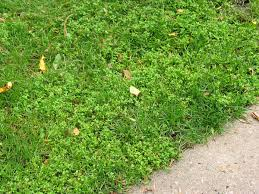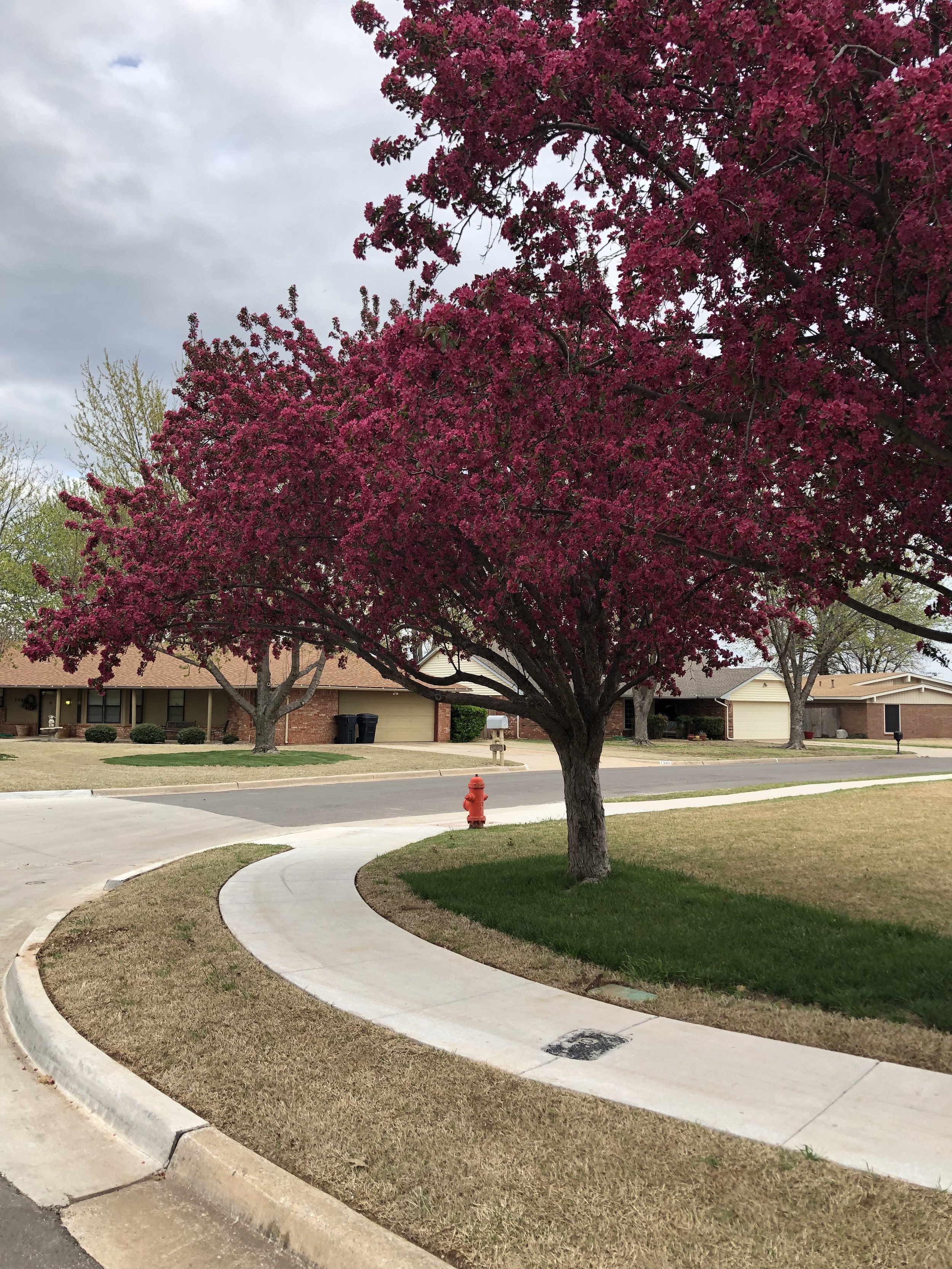The Fall Pre-Emergent – The Application That Sets Your Lawn Up For Success Next Spring
A large portion of lawn care activities are all about setting up the next season for success.
Yes, it is still summer.
Yes, the days are still warm.
Yet, we are already focused on the fall and making sure you have your best lawn next spring.
It is often hard to keep up the enthusiasm for your lawn and landscape this time of year. The dog days of summer have taken all the enjoyment out of working on your lawn and landscape. Then, add on the busyness of the start of the school year and it is often hard to keep up with the best lawn and landscape practices.
But, when it comes to having your best lawn, the worst thing you can do is give up now. Finishing the season strong is important.
An early fall pre-emergent before fall & winter annual weeds start to germinate as temperatures cool this fall is the key to having your best lawn next spring.
Why? Because: Nothing sets up your lawn for success next spring more than what you do now!
The most critical lawn care applications are the ones that include pre-emergent herbicides.
Everyone knows the importance of the spring applications, but did you know that the fall applications are just as critical?
Why are the fall pre-emergent applications so important?
Fall pre-emergent applications are the key to having a clean lawn next spring.
Fall pre-emergent applications prevent poa annua, rescuegrass, cheat, brome, chickweed, and henbit. These are the weeds that clutter your lawn in the spring.
Bermuda lawns that do not receive the early fall pre-emergent soon run the risk of being very weedy next March and April as the green up.
Common chickweed is a winter annual broadleaf with a prostrate, mat-like growth (rarely higher than 2") and broad egg shaped leaves spaced evenly and opposite each other along the stem with small white flowers in the spring. One interesting fact about chickweed seeds - they can remain viable in the soil for 7-8 years. Chickweed is another winter annual that is easily prevented and when not prevented is fairly easy to control in the winter to early spring, but very difficult to control once flower production begins in spring. As with many weed issues, the tried-and-true best defense against chickweed is a thick and lush lawn going into the fall.
Henbit is a broadleaf winter annual weed with greenish to purplish square stems, green scallop edged leaves, and reddish purple flower in the spring. Seeds germinate in the fall but the weed often goes unnoticed until we have periods of warm winter weather when henbit grows best. Henbit is easily prevented with fall pre-emergent applications but can be difficult to control in late spring when it is mature, flowering and littering your lawn. As with most weeds, a dense turf is the best prevention against the development of henbit.
Henbit
Poa annua, also known as annual bluegrass, is the fall’s equivalent to spring’s crabgrass. Without a fall pre-emergent, your lawn will not be clean next spring. Just like crabgrass, when it is mature, poa annua is hard to control without causing turf injury. Next spring, we want your lawn to be focused on emerging from dormancy without the harmful effects of harsh post-emergent herbicide applications.
How a Bermuda lawn looks in April when no fall pre-emergent applications were made.
Poa Annua is a winter annual grassy weed that will germinate this fall. Without a fall pre-emergent application there is a good chance your lawn will be full of poa annua next spring.
Poa Annua is a low growing winter annual weed that will have white seed heads next spring. A pre-emergent between now and the end of September is a critical step in not having a lawn full of weeds next spring.
Poa Annua germinates and thrives in thin areas of fescue during the fall, winter and spring. Poa Annua does not have a competitive advantage over fescue when it is thick, healthy and actively growing. Overseeding thin fescue in the fall is a great way to prevent poa annua.
Poa Annua is an annual grassy weed that invades lawns in the fall and winter. It is a lighter green clumping grass with small white flowers (seed heads) in the spring. Germination occurs in moist soil starting in the fall when night temperatures drop into the 60s and continues through the winter and spring. Poa Annua has a competitive advantage over bermuda in the winter when it is activity growing and the bermuda is dormant.
The goal with a warm season bermuda lawn is for it to be clean of winter weeds this winter and coming spring. Fall pre-emergent applications are the key.
Weeds are easier to prevent in the fall than they are to control in the spring.
Poa annua, also known as annual bluegrass, is the fall’s equivalent to spring’s crabgrass. Without a fall pre-emergent, your lawn will not be clean next spring. And, just like crabgrass, when it is mature, poa annua is hard to control without causing turf injury.
Next spring, we want your lawn to be focused on emerging from dormancy without the harmful effects of harsh post-emergent herbicide applications. Lawns that do not receive the early fall pre-emergent application will be filled with weeds next February through April. While lawns that receive fall applications will start next year clean and healthy.
Timing of the fall pre-emergent applications is critical. As temperatures cool in the fall, cool season annual weeds will germinate.
The first application for the fall needs to be made sometime between mid-August and end of September.
A second application should be put on your lawn 6-10 weeks after the first fall application to ensure full weed control until the lawn emerges from dormancy next spring. Research shows that poa annua has developed resistance to pre-emergent applications. A second fall pre-emergent in October through November increases control of poa annua.
Next spring when the crabapples are in bloom and fescue is green, Bermuda lawns should be weed free. This is only possible if a fall pre-emergent is applied between late August and early October with a second application 4-6 weeks later.
There is only one reason to NOT put the first fall pre-emergent application on your lawn: SEEDING FESCUE.
The same pre-emergent herbicide that prevents annual weeds from germinating WILL PREVENT new grass seed from coming up. Because developing a thick turf is so critical to good weed control, and because September through October is by far the best time to establish a cool season lawn, not applying a pre-emergent herbicide to the areas you are seeding is the right thing to do. Once the new seed is up, actively growing, and has been mowed 3-4 times, you can apply a fall pre-emergent application.
Note: If you are only seeding a portion of your lawn, you should have a pre-emergent applied to the areas you are not seeding.
The only exception to the early fall pre-emergent being a must for your best lawn next spring is if you are overseeding with fescue this fall. If overseeding, skip the early pre-emergent, seed with fescue, then apply the late fall pre-emergent after the newly seeded area has been mowed a few times.
Important – If you are planning on seeding all or part of your lawn this fall, please let us know so we can adjust your applications accordingly.
Need help deciding if you need to overseed all or parts of your lawn with fescue this fall? Check out last week’s email: Bermuda vs Fescue. The Choice is Yours!
Dormant Bermuda will be weed free in February and March when both fall pre-emergent applications are on schedule.
If you are not overseeding all your lawn with fescue this fall, it is important to not skip the early fall pre-emergent. All the areas you are not seeding need the early application to look their best next spring.
Fall pre-emergent applications will ensure your lawn is not full of annual winter weeds next March.
DO NOT apply the early fall pre-emergent on your lawn if you are planning on seeding with fescue this fall.
Please contact us if you plan to overseed with fescue this fall so we can adjust our application plans for your lawn.
There are 4 types of lawn care customers:
Customers who subscribe to the Hall | Stewart 7-step program and enjoy having a clean, healthy and growing turf. If you are on the 7-step program, you will receive both fall pre-emergent applications.
Customers who want to make sure their lawn receives timely pre-emergent herbicides but enjoy applying their own fertilizer. If this defines you, you are receiving the Hall | Stewart 4-step weed control only program and will receive the 2 fall pre-emergent applications.
The occasional application customer who takes a few applications, often the early spring applications. If this defines you, please don’t skip the fall pre-emergent steps this year. You will not regret the fall applications next spring when your lawn starts the year weed free.
Customers who have “thrown in the towel” on this season and plan on starting again next spring. If this defines you, a great lawn next spring doesn’t start next spring. A great lawn next season starts this fall.
Remember – it is always easier to prevent weeds than it is to kill actively growing weeds.
Nothing will make a bigger difference in the way your lawn looks next spring than applying both fall pre-emergent applications this year.
If you have any questions about fall pre-emergent herbicides, please give us a call at (405)367-3873.
Lorne Hall
Hall | Stewart Lawn + Landscape
(405)367-3873





















